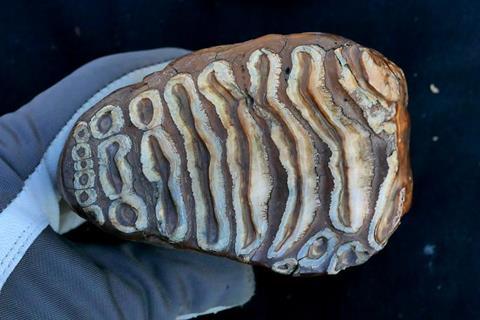An international team led by researchers at the Centre for Palaeogenetics, has uncovered microbial DNA preserved in woolly and steppe mammoth remains dating back more than one million years. The analyses reveal some of the world’s oldest microbial DNA ever recovered, as well as the identification of bacteria that possibly caused disease in mammoths. The findings are published in Cell.

Researchers at the Centre for Palaeogenetics, a collaboration between Stockholm University and the Swedish Museum of Natural History, analyzed microbial DNA from 483 mammoth specimens, of which 440 were sequenced for the first time. Among them was a steppe mammoth that lived about 1.1 million years ago. Using advanced genomic and bioinformatic techniques, the team distinguished microbes that once lived alongside the mammoths from those that invaded their remains after death.
READ MORE: AI uncovers new antibiotics in ancient microbes
READ MORE: Deadly infectious bone disease wiped out long-necked dinosaurs in Brazil
“Imagine holding a million-year-old mammoth tooth. What if I told you it still carries traces of the ancient microbes that lived together with this mammoth? Our results push the study of microbial DNA back beyond a million years, opening up new possibilities to explore how host-associated microbes evolved in parallel with their hosts,” says Benjamin Guinet, a postdoctoral fellow at the Centre for Palaeogenetics and lead author of the study.
Six microbial clades
The analyses identified six microbial groups consistently associated with mammoth hosts, including relatives of Actinobacillus, Pasteurella, Streptococcus, and Erysipelothrix. Some of these microbes may have been pathogenic. For instance, one Pasteurella-related bacterium identified in the study is closely related to a pathogen that has caused fatal outbreaks in African elephants. Since African and Asian elephants are the closest living relatives of mammoths, these findings raise questions about whether mammoths may also have been vulnerable to similar infections.
Remarkably, the team reconstructed partial genomes of Erysipelothrix from a 1.1-million-year-old steppe mammoth, representing the oldest known host-associated microbial DNA ever recovered. This pushes the limits of what researchers can learn about the interactions between ancient hosts and their microbiomes.
“As microbes evolve fast, obtaining reliable DNA data across more than a million years was like following a trail that kept rewriting itself. Our findings show that ancient remains can preserve biological insights far beyond the host genome, offering us perspectives on how microbes influenced adaptation, disease, and extinction in Pleistocene ecosystems,” says Tom van der Valk, senior author and researcher at the Centre for Palaeogenetics.
Window into ancient ecosystems
Although the exact impact of the identified microbes on mammoth health is difficult to determine due to DNA degradation and limited comparative data, the study provides an unprecedented glimpse into the microbiomes of extinct megafauna. The results suggest that some microbial lineages coexisted with mammoths for hundreds of thousands of years, spanning both wide geographic ranges and evolutionary timescales, from over one million years ago to the extinction of woolly mammoths on Wrangel Island about 4,000 years ago.
“This work opens a new chapter in understanding the biology of extinct species. Not only can we study the genomes of mammoths themselves, but we can now begin to explore the microbial communities that lived inside them,” says Love Dalén, Professor of Evolutionary Genomics at the Centre for Palaeogenetics.







No comments yet